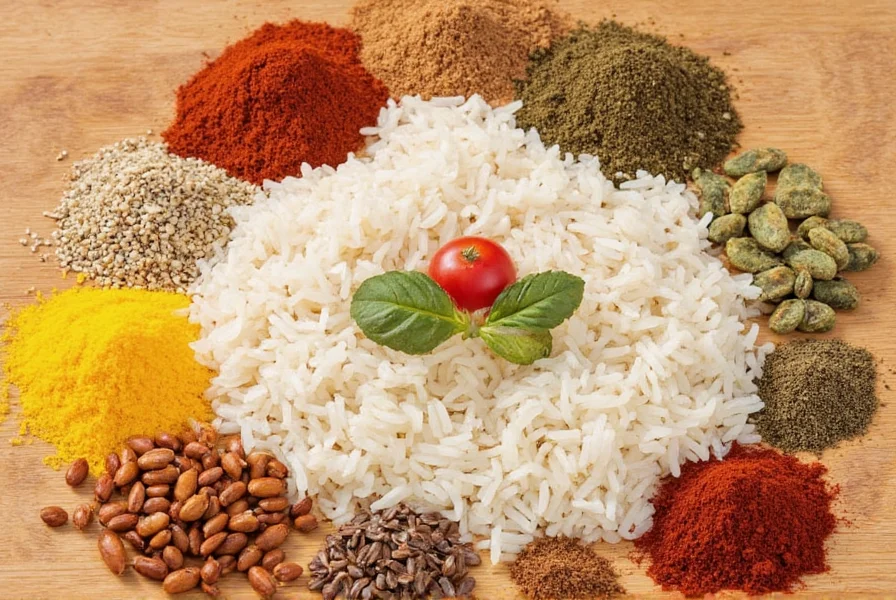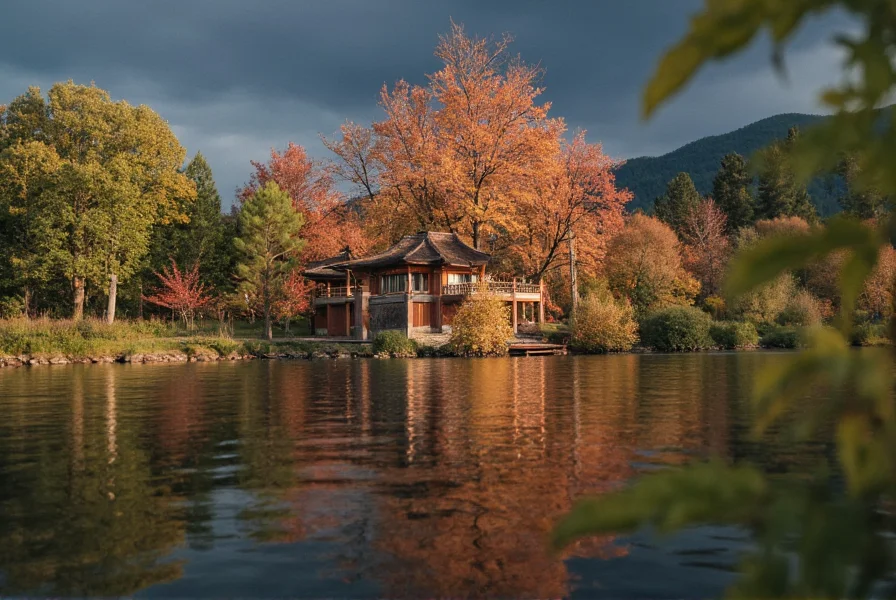Learn how to make authentic jambalaya rice with this easy step-by-step recipe. Perfectly balanced spices, tender rice, and flavorful proteins come together in this classic Creole dish that's ready in under an hour. Whether you're cooking for family dinner or a casual gathering, this guide will help you master jambalaya from start to finish.
Ingredients
- 1 cup long-grain white rice
- 1 lb boneless chicken thighs (or shrimp)
- 1/2 lb andouille sausage, sliced
- 1 onion, finely chopped
- 1 green bell pepper, finely chopped
- 2 celery stalks, finely chopped
- 3 cloves garlic, minced
- 1 (14.5 oz) can diced tomatoes
- 2 cups chicken broth
- 1 tbsp smoked paprika
- 1 tsp cayenne pepper (adjust to taste)
- 1 tsp dried oregano
- 1 tsp garlic powder
- 1 tsp onion powder
- 1/2 tsp thyme
- 2 tbsp olive oil
- Salt and black pepper to taste
- Green onions and parsley for garnish
Step-by-Step Instructions
- Prepare the protein: Heat 1 tbsp olive oil in a large Dutch oven over medium-high heat. Add chicken thighs and cook until browned (5-6 minutes). Remove and set aside. Repeat with sliced andouille sausage until lightly browned. Remove and set aside.
- Sauté the holy trinity: In the same pot, add remaining olive oil. Add onion, bell pepper, and celery. Cook for 5 minutes until softened. Stir in garlic and cook for 1 minute until fragrant.
- Toast spices: Add smoked paprika, cayenne, oregano, garlic powder, onion powder, and thyme. Stir constantly for 30 seconds to release their flavors.
- Combine ingredients: Return chicken and sausage to the pot. Add diced tomatoes (with juices) and chicken broth. Bring to a boil.
- Cook the rice: Stir in rice, reduce heat to low, cover, and simmer for 18-20 minutes until rice is tender and liquid is absorbed. Do not stir during cooking.
- Rest and serve: Remove from heat and let stand covered for 5 minutes. Fluff with a fork, garnish with green onions and parsley, and serve immediately.
| Spice | Why It's Essential | How to Use in Jambalaya |
|---|---|---|
| Smoked Paprika | Provides deep, smoky flavor without heat | Toast with other spices before adding liquid for maximum aroma |
| Cayenne Pepper | Adds controlled heat | Start with 1 tsp and adjust after tasting; balance with acidity from tomatoes |
| Dried Oregano | Brings earthy, herbal notes | Add early in cooking to allow flavors to meld with tomatoes and broth |
| Garlic Powder | Consistent garlic flavor without burning | Combine with other dry spices before adding to pot |
Essential Spice Storage Tips for Jambalaya Ingredients
Proper spice storage ensures your jambalaya always has vibrant flavor:

1. Use Airtight Containers
Store all spices in glass jars with tight-fitting lids. This prevents moisture and air from degrading quality. Keep them in a cool, dark pantry away from the stove.
2. Label and Date
Always label containers with spice name and purchase date. Ground spices last 6-12 months, while whole spices stay fresh for 2-3 years.
Frequently Asked Questions About Jambalaya
What's the difference between Creole and Cajun jambalaya?
Creole jambalaya includes tomatoes ("red jambalaya") and has French/Spanish influences, while Cajun jambalaya skips tomatoes for a "brown" version. Both use the "holy trinity" of onions, bell peppers, and celery, but Creole versions often have more seafood.
Can I use instant rice for jambalaya?
Absolutely not. Instant rice cooks too quickly and becomes mushy. Always use long-grain white rice for proper texture. Basmati or jasmine rice can work as alternatives, but avoid short-grain or glutinous varieties.
How do I adjust spice levels for kids?
Reduce cayenne to 1/4 tsp and omit it entirely for young children. Add more smoked paprika for flavor without heat. Serve with a side of plain rice for picky eaters.
Conclusion
Mastering jambalaya is about balancing spices and technique. By following these steps, you'll create a dish with rich flavors and perfect rice texture every time. Remember: proper spice storage ensures your ingredients stay potent, and toasting spices before adding liquid unlocks their full potential. Now get cooking and enjoy this taste of Louisiana in your own kitchen!











 浙公网安备
33010002000092号
浙公网安备
33010002000092号 浙B2-20120091-4
浙B2-20120091-4